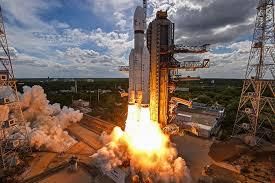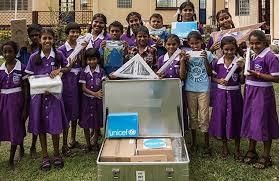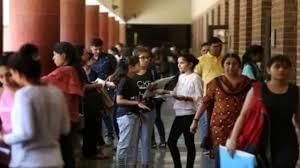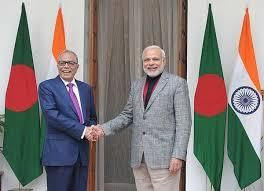UPSC Daily Current Affairs: 23rd June 2024 | Current Affairs & Hindu Analysis: Daily, Weekly & Monthly PDF Download
GS-III/Space
India’s Space Economy
Source: AIR

Why in News?
The Government stated that the nation's portion of the global space economy is expected to grow to four times its 2021 size by 2030.
About India’s Space economy
- India has established itself as a pioneer in space exploration, evolving from the modest start of transporting rocket components on bullock carts to the remarkable accomplishment of launching a record number of satellites in a single mission.
Present Status
A report by the World Economic Forum and McKinsey estimates the size of the global space industry to be $630 Bn in 2023. It is expected to grow 9% per annum and reach $1.8 Tn by 2035.
- India’s space economy, valued at $8.4 Bn in 2023, currently accounts for 2-3% of the global space economy.
- India so far earned 174 Million US Dollars from the launching of the foreign satellites; out of these $174 million, as much as $157 million have been earned only in the last nine years.
Importance and Achievements
- ISRO has gained a reputation as a dependable participant in the international satellite launch market with its Polar Satellite Launch Vehicle (PSLV) and the more robust Geosynchronous Satellite Launch Vehicle (GSLV) series.
- India has advanced significantly in cutting-edge technologies, demonstrated by successful missions like Chandrayaan-3, Aditya-L1, and XpoSat.
- With the Mars Orbiter Mission (Mangalyaan) in 2013, India became the first country to reach Mars' orbit on its initial attempt.
- Space technology in India impacts nearly every individual's life, with applications spanning disaster management, SVAMITVA, PM Gati Shakti, infrastructure (including railways, highways, and smart cities), agriculture, water mapping, telemedicine, and robotic surgery.
- The Indian Regional Navigation Satellite System (IRNSS), also known as NavIC, delivers precise positioning information across India and the surrounding area.
Challenges
- The Indian Space Research Organisation (ISRO) operates on a limited budget compared to other major space agencies.
- This restricts the scale and pace of its space missions and satellite launches.
- The infrastructure for manufacturing and testing satellites and components is not as extensive or advanced as in countries like the USA or European nations.
- Regulatory frameworks and bureaucratic processes can hinder private sector growth and innovation.
- Indian companies and ISRO face challenges in competing on a global scale due to resource constraints and technology gaps.
Initiatives
- The government has announced the Indian Space Policy 2023, which enables end-to-end participation of Non-Governmental Entities (NGEs) in all domains of Space activities.
- The Indian National Space Promotion and Authorization Centre or IN-SPACe was created to support private sector participation in space activities.
- Today India has nearly 200 private Space Startups after opening up of the sector while the earlier ones have even turned entrepreneurs.
- There has been an investment of over Rs.1,000 crore by private Space Startups in the current financial year from April to December 2023.
- NewSpace India Limited (NSIL), serving as the commercial arm of ISRO under DoS, helps NGEs commercialise their space technologies and platforms
- Amendment to the FDI policy: 100 percent Foreign Direct Investment has been allowed for manufacturing and operation of satellites, satellite data products and ground segment and user segment, out of which up to 74 per cent will be through the automatic route and government approval will be required for investment beyond 74 per cent.
Conclusion and way ahead
- India's space sector is at a critical turning point, and by leveraging the combined potential of ISRO, NSIL, IN-SPACe, and its dynamic startup ecosystem, the country can emerge as a significant force in the global space economy and introduce transformative applications for its citizens and the world.
- The success of India's space economy will heavily rely on government support and guidance as space tech entrepreneurs begin their journey into private sector involvement.
- Through strategic investments in infrastructure and manufacturing, along with promoting innovation and education, India can reach its target of a US$44 billion space economy by 2033, strengthening its status as a global leader in space technology and services.
GS-IV/ Ethics
School in a Box Initiative
Source: The Hindu

Why in News?
In partnership with UNICEF, the Assam State Disaster Management Authority (ASDMA) is distributing "School in a Box" kits to children aged 6-18 in flood-affected relief camps.
About
- The kits include educational materials to maintain continuity of education despite displacement and trauma.
- This initiative responds to the severe floods and landslides in Assam, aiming to mitigate the psychological effects of displacement on children and teenagers.
- Initially targeting children up to 6 years old, the program now also serves older children, offering them notebooks, drawing books, pencils, and other educational supplies.
How beneficial is this initiative?
- Educational Continuity: Ensures that children can continue learning and maintain normalcy despite being displaced.
- Developmental Support: Provides age-appropriate educational materials to support cognitive and emotional development for various age groups.
- Empowerment: Gives children the knowledge and skills to rebuild their lives and communities post-disaster.
- Community Building: Fosters a sense of community and support among children and families in relief camps, encouraging connections and shared experiences.
- Resilience Building: Promotes educational continuity, helping create resilient communities capable of better withstanding and recovering from future disasters.
- Positive Impact: Highlights a commitment to child welfare and education, enhancing public perception and support for relief efforts.
GS-II/International Relations
Recognition of Palestine
Source: The Hindu

Why in News?
The UN Conference on Trade and Development (UNCTAD) has released the World Investment Report 2024.
Major Findings
- Environment for Investment: The global landscape for international investment remains challenging in 2024.
- FDI Patterns: Factors such as weakening growth prospects, economic fracturing, trade and geopolitical tensions, industrial policies, and supply chain diversification are reshaping foreign direct investment (FDI) patterns, leading some multinational enterprises (MNEs) to be cautious about expanding overseas.
- Project Finance and M&As: International project finance and cross-border mergers and acquisitions (M&As) were particularly weak in 2023, with M&As, which primarily impact FDI in developed countries, decreasing by 46 percent in value.
- Greenfield Investment Projects: The number of greenfield investment projects increased by 2 percent, with growth mainly in developing countries where project numbers rose by 15 percent. In contrast, new project announcements in developed countries dropped by 6 percent.
- Largest Greenfield Announcement: The largest greenfield announcement in 2023 was a green hydrogen project in Mauritania, expected to attract $34 billion in investment.
- FDI in Developing Asia: Foreign direct investment in developing Asia declined by 8 percent, with China, the second-largest FDI recipient globally, experiencing an unusual drop in inflows. Significant declines were also noted in India and in West and Central Asia.
GS-II/Indian Polity
11 Candidates Apply to verify EVM Burnt Memory
Source: Indian Express

Why in News?
The Election Commission of India has received 11 requests to verify the memory of Electronic Voting Machines (EVM) and Voter Verifiable Paper Audit Trails (VVPAT) from the recently concluded Lok Sabha and Assembly elections.
About
- Verification Requests: These requests entail rechecking the votes cast in 5% of the Electronic Voting Machines (EVMs) used in each constituency.
- Legal Context: This marks the first instance of such requests since the Supreme Court's April 24 ruling, which permits verification at the request of candidates who finished second in any election.
- Cost Coverage: Candidates are required to cover the expenses of the verification process initially. However, they will receive a refund if any tampering is discovered.
Procedure Laid down by the ECI
- Responsibility: The District Election Officer (DEO) will oversee the process.
- Request Procedure: Both the candidate who finished second and the candidate who finished third will have the opportunity to request the verification of up to 5% of the Electronic Voting Machines (EVMs) and Voter Verifiable Paper Audit Trails (VVPATs) per Assembly constituency or Assembly segment of a Lok Sabha constituency.
- Request Submission: Candidates must submit their requests in writing to the respective DEOs. They are also required to deposit Rs 40,000 (plus 18% GST) per set of EVMs to the manufacturer involved.
- Commencement of Verification: Verification will begin after the 45-day period following the declaration of results, during which Election Petitions can be filed by any candidate or elector challenging the outcome.
GS-II/Health & Education
The NEP debate: Why criticism of the policy is premature and off the mark
Source: Indian Express

Why in News?
- Opposition from Traditionalists: Critics primarily oppose the emphasis on markets, industrial experience, and internships in education.
- NEP Alignment: The National Education Policy (NEP) aligns with Ambedkar's vision of education that prioritizes enhancing employability for the majority of Indians.
About the National Education Policy (NEP)
- The National Education Policy (NEP) was introduced in 2020, replacing the outdated NEP from 1986, which had been delayed for 34 years.
- Its objective is to tackle the issue of low employability among graduates by aligning education with the swiftly evolving technological and industrial environment.
- The policy stresses a comprehensive education that encompasses deep knowledge, soft skills, technical proficiency, research capabilities, analytical and problem-solving skills, as well as critical thinking.
- The NEP transitions all programs to focus on outcome-based learning, featuring defined learning objectives and corresponding assessments for each course.
Why Criticism of the Policy is Premature and Off the Mark?
- Initial Implementation Phase: Critics contend that the NEP at its early stage dilutes core content and imposes bureaucratic demands on students and educators, although these criticisms are seen as premature.
- Ongoing Process: Revamping the extensive education sector is a continuous process, and many concerns are deemed exaggerated.
- University-Specific Challenges: Much of the criticism revolves around syllabus design and content, which are specific to universities and not indicative of failures within the NEP.
Provisions under NEP and Government Efforts
- Credit-Based Courses: The NEP introduces courses based on credits, providing students with flexibility and a multidisciplinary academic path.
- Ability and Skill Enhancement Courses: Designed to impart employability and entrepreneurial skills to students.
- Recognition of Prior Learning (RPL): Students can earn credits through RPL by gaining industrial exposure related to their studies, promoting lifelong learning.
- Revamped Curriculum and Syllabi: Emphasizes hands-on learning and continuous assessment through credited tutorials.
- Internships and Practical Experiences: Degree programs integrate internships, apprenticeships, projects, and community outreach.
- Flexible Exit and Re-Entry: Allows students to exit and re-enter programs, accommodating diverse backgrounds and circumstances.
Way Forward
- Adaptable Academia: Academic institutions need to align education with employability and industrial demands, ensuring responsiveness to societal needs and market requirements.
- Ongoing Feedback and Revisions: Institutions should regularly update their programs based on feedback from stakeholders, drawing inspiration from successful examples such as Delhi University.
- Sustained Infrastructure Growth: Achieving the NEP's full potential necessitates sustained, long-term infrastructure development efforts.
GS-II/International Relations
India- Bangladesh Bilateral Relations
Source: Times of India

Why in News?
Shortly after Hasina began her two-day state visit to India, External Affairs Minister S. Jaishankar met with her to discuss various bilateral issues.
Bangladesh’s Prime Minister Sheikh Hasina’s Visit to India
- Purpose of the Visit: The visit aims to strengthen bilateral relations between India and Bangladesh.
- Sheikh Hasina will engage in discussions with Prime Minister Narendra Modi. Additionally, meetings are scheduled with President Droupadi Murmu and Vice President Jagdeep Dhankhar.
- Both countries will explore bilateral cooperation in security, trade, commerce, energy, connectivity, science and technology, defense, and maritime affairs. Potential agreements in various sectors are expected to enhance cooperation between the two nations.
India-Bangladesh Relations and the Teesta Water Dispute
- Bilateral Relations:
- Strategic Importance: Bangladesh holds a pivotal position as a key partner in India's "Neighbourhood First" policy.
- Trade: Bangladesh stands as India’s largest trade partner in South Asia, while India ranks as Bangladesh's second-largest trade partner in Asia.
- Connectivity: Significant projects include the Maitri Setu bridge over the river Feni in Tripura and the Chilahati-Haldibari rail link.
- Development Partnership: Bangladesh is India’s largest development partner, with substantial commitments under the Line of Credit.
- Border Cooperation: Both countries actively collaborate on police matters, anti-corruption efforts, combating illicit drug trafficking, counterfeit currency, and human trafficking.
- Teesta Water Dispute:
- Controversy: The sharing of Teesta River water has been a contentious issue, impacting bilateral relations.
- Current Status: Ongoing discussions and negotiations aim to achieve a mutually agreeable resolution.
Way Forward
- Enhanced Bilateral Cooperation: Foster stronger ties through frequent high-level visits and dialogues.
- Resolution of Teesta Dispute: Focus efforts on reaching a fair and sustainable resolution to the Teesta water-sharing issue to enhance bilateral relations.
- Economic Integration: Expand trade and investment opportunities to bolster economic ties between the two nations.
- Infrastructure Development: Advance connectivity projects to improve trade and facilitate greater people-to-people exchanges.
- Security Cooperation: Enhance collaboration on security matters, including counter-terrorism and effective border management.
- Cultural and Educational Exchanges: Promote exchanges in culture and education to strengthen interpersonal connections between India and Bangladesh.
GS-III/Science Tech
Possible risks of “Acute Poisoning” due to high Capsaicin Levels
Source: Indian Express

Why in News?
Danish food safety authorities have issued a recall for three varieties of South Korean spicy instant noodles due to concerns over possible "acute Capsaicin poisoning."
What is Capsaicin?
- Capsaicin Source: Capsaicin, the compound responsible for the spiciness of chili peppers, is primarily located in the white membrane (placenta) of certain chili varieties.
- Mechanism of Action:
- Capsaicin binds to TRPV1 receptors in the human body.
- These receptors, which detect heat and pain, are deceived by capsaicin, causing them to respond as if there is a temperature increase.
- This deception triggers a painful and burning sensation.
- Physiological Response:
- The body's reaction includes sweating, facial redness, a runny nose, teary eyes, gastrointestinal cramps, and diarrhea.
- These responses aim to cool down and expel the perceived heat caused by capsaicin.
Evolutionary Benefits of Capsaicin
- Differential Feeding Response: Birds tend to avoid chilies, whereas rodents consume them.
- TRPV1 Receptor Absence in Birds: Unlike rodents, birds lack TRPV1 receptors.
- Role in Seed Dispersal: Birds act as seed dispersers, aiding in the germination of chili seeds.
- Evolutionary Function of Capsaicin:
- Capsaicin serves an evolutionary purpose by deterring mammals from consuming the seeds.
- This protection extends to shielding the plant from fungi and insects.
- Resource Intensity and Vulnerability: The production of capsaicin requires significant resources, making spicy chilies more susceptible to drought conditions.
Human Affinity for Spicy Foods
- Over 3,000 chili cultivars have been bred for varying color, taste, and pungency.
- Some experts believe humans’ love for spicy foods stems from their antimicrobial benefits, which are particularly useful in hotter climates where food spoils faster.
- Psychologists argue that eating spicy foods is similar to thrill-seeking activities, providing a simulated risk without actual danger.
Potential Risks of Capsaicin
- High concentrations of capsaicin can cause heartburn, gastrointestinal pain, and diarrhoea.
- Long-term ingestion of high levels may lead to chronic gastrointestinal disorders.
- Capsaicin poisoning is rare due to the large amount required for toxicity, with a person needing to consume around 2.5 liters of Tabasco sauce to overdose.
GS-III/Enviro & Biodiversity
How long is Carbon is stored in plants?
Source: Down To Earth

Why in News?
A recent study published in the journal Science suggests that carbon storage in terrestrial vegetation is less enduring and more at risk from climate change than previously thought.
Carbon Absorption and Storage in Plants
- Current models may overestimate the time carbon remains stored in plants, meaning it returns to the atmosphere sooner than previously expected.
- Experts emphasised that while plants and forests play a crucial role in drawing down carbon dioxide, their potential is limited.
- The study calls for a rapid reduction in fossil fuel emissions to mitigate climate change impacts.
Use of Radiocarbon (Carbon-14) in Research
- Researchers used Carbon-14, a radioactive isotope, to track carbon accumulation and turnover in the terrestrial biosphere.
- Nuclear bomb testing in the 1950s and 1960s increased atmospheric C-14 levels, providing a unique opportunity to study carbon cycling.
Study Results
- By analysing C-14 accumulation in plants from 1963 to 1967, researchers compared these findings to current models.
- The analysis showed that net primary productivity (the rate of new plant tissue creation) is likely at least 80 petagrams of carbon (PgC) per year, higher than the 43-76 PgC per year predicted by current models.
- The C-14 accumulation in vegetation during 1963-67 was 69 ± 24 ×10²⁶, suggesting a more rapid carbon cycle between the atmosphere and biosphere than previously thought.
Implications of the Study: Reforestation is inadequate
- Today, reforestation is proposed to remove CO2 from the atmosphere, but trees do not return the CO2 to the geological layers from which the fossil fuels came.
- This sink is transitory and this study shows us that its duration is even shorter than we thought.
|
63 videos|5408 docs|1146 tests
|
















